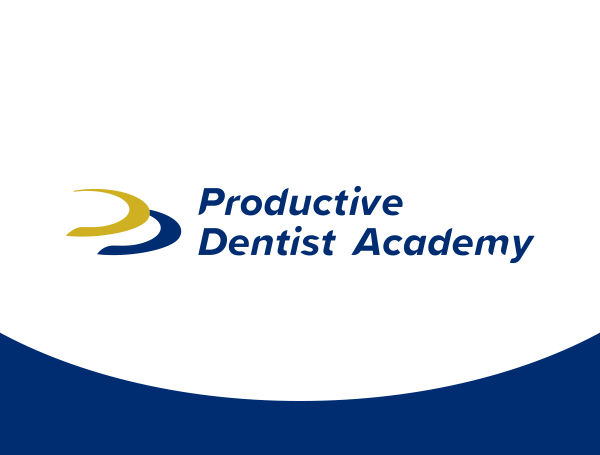Your Practice is Dynamic, So Why is Your Site So Boring? Upgrade your dental website to attract more engaged patients in 2017
Is your website a dynamic portal for your practice, or a static, online brochure? For too many dental practices, creating a website is the equivalent of checking off an item on a list. You hire a designer, you approve the final draft, and you put it online. You pay the web hosting service once a year, and you forget about it.
You might include your web address in marketing materials. You might start a Facebook page and link your site from the ‘about us’ section. But for the most part, your website only changes if your address or hours change. There is literally no reason for an established patient to visit your site, and the only purpose it serves for new patients is to give them a map to your office and a link to your phone number.
If you’re making do with a static site, you’re making a big mistake. Today’s patients Google you before they ever call your office for a consultation. Your website has taken the place of an interview. People check it out to see who you are, what your practice is like, and whether they’d like to be your patient. A static website isn’t just a neutral placeholder. It actually hurts your reputation among potential patients.
Make 2017 the year that you ditch your static website and replace it with a dynamic hub that provides real value to your practice, your staff, and your current and future patients.
What is a Dynamic Website?
Dynamic means changing, energetic, and interesting. There’s a good chance that your practice is very dynamic. Your staff are energetic and engaging. The air crackles with a sense of purpose and a sense of joy. Patients are generally glad to see you, have an excellent experience with your practice, and want to recommend you to family and friends. A dynamic website should capture the mood and energy of day-to-day life in your practice.
Dynamic websites include:
- Blogs that update weekly or monthly. According to Social Media Today, 77% of active web users read blogs. Blogs let prospective patients know what your practice is like, and let your most dedicated patients keep up with your office in between appointments. Blogs are also an easy way to attract search traffic. Google gives preferences to sites that provide current information and update regularly. A blog lets you do this with fairly little effort.
- Photos and video that give an authentic feel for your practice. Patients want to know who they’ll meet when they arrive at your office. Video walk-throughs, 360-degree views, and photos and video of you and your staff give them a sense of what your practice is like. These sorts of features are especially important for attracting young adults. Recent studies show that millennials value authenticity in web design, and avoid places that feel inauthentic.
- Engagement with social media platforms. Social media is a great way to connect with your patients, but your content needs a home base that’s under your control. A dynamic website includes buttons and links that make it easy for you and your patients to share your content to Facebook, Twitter, Pinterest, LinkedIn and Google +.
- A combination of educational, uplifting, and humanizing content that promotes your brand. To keep your website feeling fresh and interesting, you’ll need to develop a variety of content. If your site feels formulaic and dull, patients will assume that you are formulaic and dull. To develop the right blend of content, develop a sense of your brand. Make sure your website reflects your total brand, not just one aspect of it.
Beginning with a Blog for a More Dynamic Site
The first step to creating a dynamic website is adding a blog. You can use your blog to add personality and new content to your site by writing timely articles about events in the practice, dental news, or seasonal advice. When you add media to the video, podcast, or photo areas of your site, you can mention it on your blog. You can share your blog posts to other social media sites, and make it home base for discussions with your patients. Basically, the blog becomes a hub for patients who want to engage with the content you’re adding to your site.
One word of warning: it’s not enough to add a blog. You need to add the right sort of blog to create a dynamic site.
There exists, in our field, the ‘generic dental office blog.’ It updates somewhere between once a month and once a week. One week, it might have a post of CEREC technology and how it works. The next week, the post might be “Caring for your new braces.” While the order and wording of the posts may be unique, it’s basically indistinguishable from every other dental office blog in the country. It bravely and boldly proclaims, “Our office is a generic dental office!”
You’d never ask someone out by proclaiming “I am indistinguishable from everyone else in this town!” You’d never go into a job interview and say “Hire me, because I am just like every other candidate for this job!” So why are you telling prospective patients that there is nothing that sets you apart from every other practice?
If you want your blog to contribute to the energy and atmosphere of your site and your brand, you need to do more than reiterate the same information that everyone can find in a 15-second Google search. You need a blog that builds an authentic portrait of your practice. There are 5 key features to a dynamic dental practice blog.
Feature 1: A mix of content that includes testimonials, commentary on news, ‘day in the life’ features, and humor. One way to keep your blog from becoming formulaic is to vary the sort of content that you post. Testimonials and case studies are helpful because they show patients how you help people in real-world situations. They move the conversation from “This is what we can do” to “This is what we actually do.”
Commentaries on dental news show that you’re up on recent discoveries and that you’re a trusted resource when patients have questions. “Day in the Life” features give patients an inside view of the practice and make you more approachable, and humor shows your human side. The mix keeps the blog from becoming boring and gives readers a reason to come back to the site again and again.
Feature 2: A clear sense of your audience. Too many dental blogs are all over the map with their content. Some pieces seem to be addressed to patients, other pieces seem to target colleagues, and still others seemed aimed at a kid doing a report on root canals. Speak to your target audience: patients and potential patients. For each piece of content, ask about what it tells the patients about you and your practice. Is this something they’d want to hear? Will it help them decide on treatment? For instance, patients don’t need to know the ins and outs of CEREC technology as much as they need to know how long it will take and if it will let them eat normal food again.
Feature 3: A willingness to create conversations and build community. To engage your patients, you need to be willing to engage with your patients. Allowing comments on blog posts or Facebook posts can help start conversations and give you valuable insight into what your patients want to read and talk about. If you allow comments, remember to have a staff member read and respond to them so that your readers feel valued and know that you’re listening and care about their thoughts.
Feature 4: A variety of media types. Some people don’t read. Some don’t like videos and podcasts. There are even people who can’t be bothered with hilarious memes involving kittens and puppies. Your patients are a diverse audience, so reach out to them in a variety of ways. Let your message determine the proper medium for your content. Comments on a news article might take written form, but “A day in the life of Kathy, our hygienist” might work better as a video. Include active content like quizzes or surveys from time to time and engage people who might otherwise scroll right by. Remember, you want all of your patients to feel at home in your practice.
Feature 5: Links to other pages your patients will value. Most of your patients don’t have the expertise to tell the difference between sites that give good dental advice and poor dental advice. You can help direct patients to credible links on dental fads like oil pulling. By providing links out to legitimate, research-based sites, you can educate your patients and their families, and give them the tools they need to take charge of their dental health between appointments.
Once you’ve created a blog based on these five features, you’ve begun your journey to a dynamic site.
A Dynamic Home Page for Your Dynamic Site
Once you’ve established a blogging routine and are creating interesting content on a regular basis, you can use your blog to freshen up your home page. Feature a different article on the main page each week, with a link to the full post on your blog. That way, visitors to the site will see something new each time.
You can also feature photos and videos on the main page, and change them seasonally, or as you add new content. Remember, videos should never be set to play automatically. Your patients who are using phones to access your site want to be able to control how much data they use.
If you collect testimonials from patients, you may want to change the testimonials displayed on your main page weekly or monthly. This also keeps things fresh, and shows repeat visitors that you have many satisfied patients, not just one or two.
Finally, avoid placing social media feeds on your home page unless you have a dedicated social media manager. If your Twitter and Facebook accounts don’t update on a daily basis, the feeds end up making your practice look tired and lifeless rather than vibrant and lively.
Are You Ready for a Dynamic 2017?
Your dynamic new website won’t happen overnight. You’ll need to take time to create a content calendar and plan out the sorts of themes you want to cover. You’ll also need to decide who will be writing posts, filming videos, and recording podcasts for your blog. Do you have staff members with media and marketing skills, or will you need to find a contractor to handle the new work?
Once you’ve made the transition to a dynamic site, you’ll have something you can be proud of: an online portal that reflects the energy and spirit of your practice. As the site draws in new patients and helps you interact more with existing patients, you may find that it doesn’t simply reflect the energy in your practice. A website that succeeds in creating community and engagement for your patients will also inspire your staff make your entire practice more dynamic in 2017.
Not sure how your site measures up? Contact the Productive Dentist Academy for a Free Website & Referral Analysis of your site today! Call them at 888-709-7765 and start 2017 off right.
Sources:
http://www.socialmediatoday.com/content/blogconomy-blogging-stats-infographic
Bio: Productive Dentist Academy (PDA) was co-founded in 2004 by Dr. Bruce B. Baird and Victoria Peterson to help dentists increase their productivity. What started out as a few dentists huddled around a conference table has grown into a movement helping thousands of dentists, team members, practices, and communities all over the United States. Being member built and driven, PDA has grown to meet the needs of our industry by providing three productivity workshops annually, multiple private speaking engagements, business development coaching, and full service, in-house marketing including ForeverSiteTM website development, marketing coaching, branding, direct mail, SEO, online advertising and more.
Have a great experience with PDA recently?
Download PDA Doctor Case Studies


















